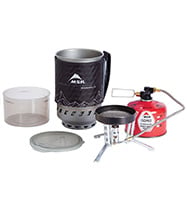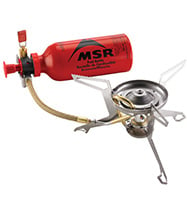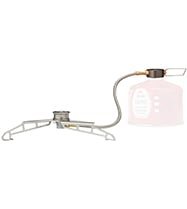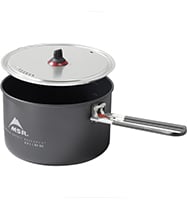How to Clean Your Backpacking Stove
We’ve all been there: the moment of horror when you realize your oatmeal (of course it’s oatmeal) is boiling over onto your stove. (We’ll blame it on not having finished that first cup of coffee yet.) And even though you snatched the pot away as quickly as you could, some of that nice, thick oaty sludge managed to splat right onto the burner head. Now what?
Whether you have an ultralight canister stove, an uber-efficient system stove or a burly liquid-fuel stove, we’ve pulled together the do’s and don’ts of cleaning your cook setup, courtesy of our expert MSR repairs team. They’ve seen it all, and now they’re passing their knowledge to you. Read on to learn how to clean your backpacking stove.
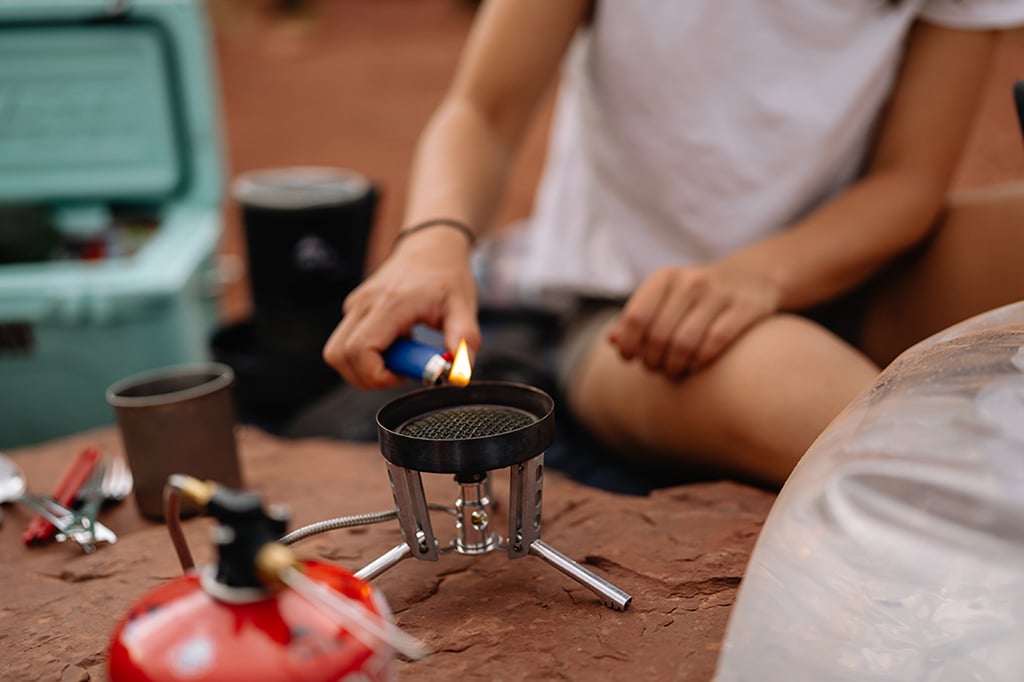
How to Clean Canister Stoves
These popular stoves are compact, lightweight and convenient because unlike liquid fuel stoves you don’t have to prime or pump them. Unlike liquid fuel stoves, they can’t be repaired at home. The general recommendation is to send them to the MSR repair shop if they need work—NEVER take apart a canister stove yourself. However, there are some steps you can take to clean your stove up after a spill.
In camp:
- Immediately following the incident, turn the stove off and let it cool down.
- Turn the stove over and tap out as much food debris as possible, then wipe the stove down.
- If the remaining residue you can’t reach isn’t too bad, you can turn the stove back on and try to burn it off. But if the burner head has a lot of gunk in the holes, you should wait and clean it at home instead of trying to burn it off. Clogged jet ports can trap fuel and possibly cause backburn and/or a dangerous situation.
At home:
- You can dunk the burner head in water for a bit to soften up the residue. Try to avoid submerging the piezo igniter as doing so can cause it to fail.
- Use an old toothbrush or sponge, warm water and soap to try and clean out the jets. Do not use anything too abrasive like steel wool, wire brushes or scrapers.
- Air-dry the stove completely once clean to prevent rust.
If these steps aren’t enough to clean your canister stove, you should send it to the Repair shop.
A special note for the PocketRocket® Deluxe, or any stoves with plastic parts: Don’t use anything petroleum-based to clean the stove, because it will ruin plastic tubing (used for piezo wires), o-rings and any other soft plastic pieces.
How to Clean System Stoves (Enclosed Canister Stoves)
System stoves are highly efficient canister stoves that are designed to integrate with a pot, enclosing the burner head and protecting it from the wind while maximizing heat transfer (note: never use a windscreen with system/canister stoves). MSR system stoves include the Reactor® and Windburner® models. The burner heads on these stoves are more complicated than regular canister stoves and need different cleaning methods.
Never submerge a Reactor or Windburner stove head. Instead, once cool, turn the stove upside down and try to lightly shake or tap as much food out as possible and sponge clean it as well as you can.
Just like regular canister stoves, if these steps aren’t enough to get your system stove clean, you should send it to our repair shop. Clogged stoves can trap fuel and possibly cause backburn and/or a dangerous situation.
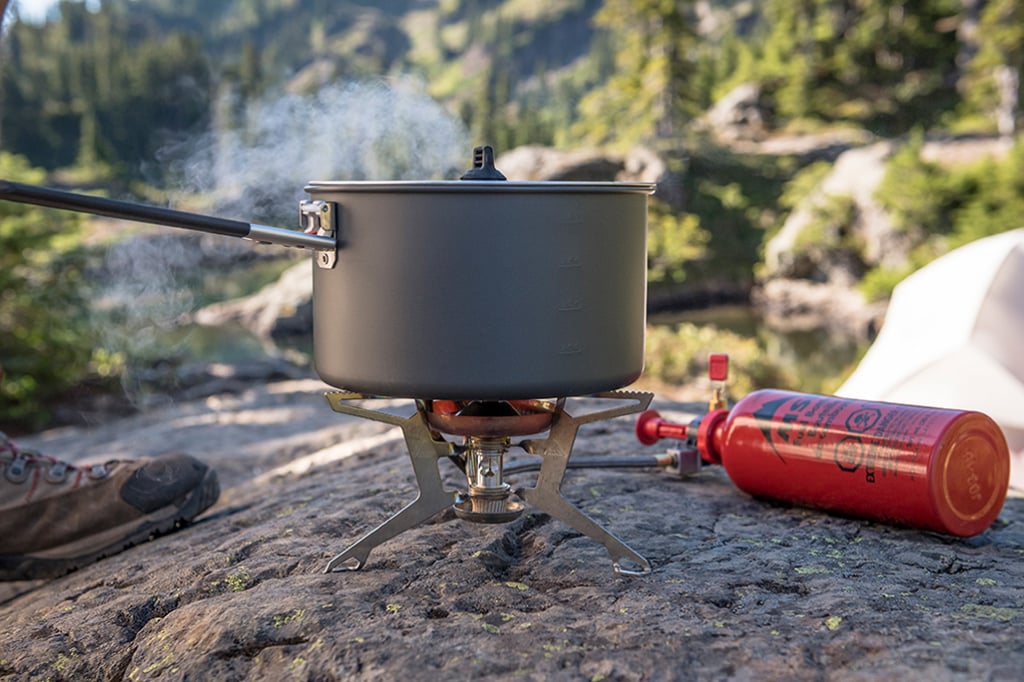
How to Clean Liquid Fuel Stoves
Unlike canister stoves, liquid fuel stoves can (and should) be easily serviced at home and in the field. They take a little more work to use, but treated well, they can be reliable for decades.
To make sure your stove is completely clean, examine the whole system from fuel to input to output, checking for gunk and clogs.
In camp:
- Immediately following the incident, while the stove is still burning, tap it on the rock or hard surface it’s sitting on to dislodge as much food as possible. This also helps the shaker needle.
- Turn it off and let it cool down. Try to wipe off as much food gunk as possible.
- If the remaining residue isn’t too bad, you can turn the stove back on and try to burn it off.
At home:
- Following the instructions in the stove manual, take the stove apart and submerge the dirty parts in water.
- Use an old toothbrush, soft/medium nylon brush or green scrubbing pad, warm water and soap to clean. Do not use anything too abrasive, many liquid fuel stoves have brass and aluminum parts that are soft and easily scored or damaged.
- Use WD40 or mineral oil inside the fuel line to clear out any buildup.
- To get your stove super clean, briefly soak it in white gas or alcohol and wipe it down.
- Dry the stove off completely once clean to prevent rust.
How to Clean Other Substances Off Your Backpacking Stove
Saltwater corrosion
Take a soft damp rag and wipe the stove down with fresh water as soon as possible. Don’t let the salt sit on the metal or it could cause damage.
Melted plastic
If you accidentally melt plastic onto your stove, do not try to burn it off. Instead, turn the stove off immediately and let it cool down. Once the plastic has cooled, peel or break off as much as you can, being careful to not damage the metal.
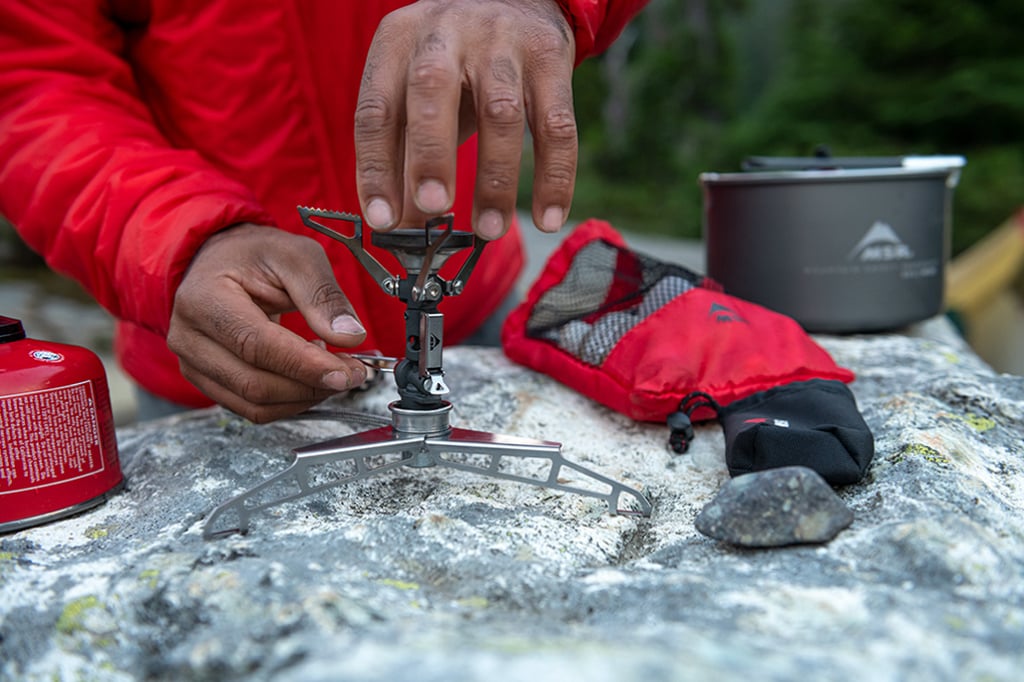
Cleaning the LowDown™ Remote Stove Adapter
The LowDown is a unique stove accessory for canister and system stoves. A wide-leg base and fuel line in one, it turns an ultralight canister stove into a stable group cooking machine and lowers taller system stoves for added stability. It also moves the flame control away from the stove itself to the top of the canister, so you can easily manage the heat level when cooking.
If any food spills on the LowDown, you can simply wipe it down in camp. For stuck-on messes, you can use a Brillo® pad and Dawn® dish soap.
Related Posts:
 Ashley Brown
Ashley Brown
Updated. Originally Published May 19, 2022.

